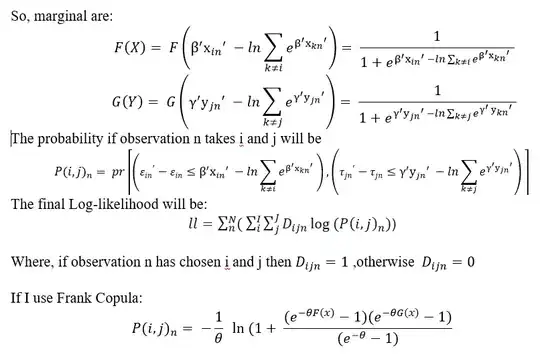If you have $n=25$ and observed number of successes
$x = 15,$ then you can test $H_0: p=0.5$ against $H_a: p\ne 0.5$ at the 5% level and you can
find a 95% confidence interval for $p.$
In R, the procedure binom.test provides both the
P-value of the test and a 95% confidence interval.
Specifically, the P-value $0.4244 > 0.05 = 5\%$
indicates that the observed $\hat p = x/n = 0.6$
is not significantly different from $p_0 = 0.5$ at the 5% level. Accordingly, the 95% CI $(0.387, 0.789)$ contains $p_0 = 0.5.$
binom.test(15, 25, p=.5)
Exact binomial test
data: 15 and 25
number of successes = 15, number of trials = 25,
p-value = 0.4244
alternative hypothesis:
true probability of success is not equal to 0.5
95 percent confidence interval:
0.3866535 0.7887452
sample estimates:
probability of success
0.6
By contrast, if you had more trials, say $n = 100$ with $x = 62$ successes, then you
could use an approximate normal test and confidence interval. [The chi-squared statistic shown in the printout below is the square of a normal test statistic.]
In this case, the null hypothesis $H_0: p = 0.05$ is rejected at the 2% level (thus also at the 5% level) in favor of the
alternative $H_a: p\ne 0.5$ and a 95% confidence
interval for $p$ is $(0.522, 0.709).$
prop.test(62, 100, p=.5, cor=F)
1-sample proportions test
without continuity correction
data: 62 out of 100, null probability 0.5
X-squared = 5.76, df = 1,
p-value = 0.0164 # aprx P-val
alternative hypothesis:
true p is not equal to 0.5
95 percent confidence interval:
0.5220976 0.7090240 # aprx 95% CI
sample estimates:
p
0.62
Notes: (1) In the second example, binom.test is still valid (as shown below). However, in elementary statistics books, you may find more
refences to approximate normal tests and CIs.
binom.test(62, 100, p=.5)$p.val
[1] 0.02097874 # exact P-value
binom.test(62, 100, p=.5)$conf.int
[1] 0.5174607 0.7152325 # exact 95% CI
attr(,"conf.level")
[1] 0.95
In R, notation with $ permits showing just
part of the output.
(2) @Sycorax (+1) has shown the $\hat p = x/n$ is the method-of-moments estimator (MME) of $p.$
In addition. $\hat p = x/n$ is the maximum likelihood estimator (MLE) of $p.$
You can find the MLE by finding the value $p$ that maximizes the binomial likelihood
function, which is the binomial PDF viewed
as a function of $p$ for known $x.$
The
maximum can be found by the usual methods
of calculus. Below is a graph of a numerical solution,
in which a 'grid search' is used to find
p for which like is maximized. For $n=100, x = 62,$ the MLE is $\hat p = x/n = 0.62.$
p= seq(.1, .99, by = .001)
like = dbinom(62, 100, p)
mle = p[like==max(like)]; mle
[1] 0.62
The following plot illustrates the likelihood function and its maximum.
hdr = "Likelihood Function Showing LME"
plot(p, like, type="l", lwd=2,
ylab="Likelihood", xlab="x", main=hdr)
abline(v = mle, col="red")
abline(h=0, col="green2")

(3) Estimation of $n$ is not discussed in
this answer. Of course. if you have the data, then you can count the observations to find $n$ exactly for that sample. The difficult problem is to estimate $n$ more generally.
Perhaps see this Q&A and Google estimate binomial sample size for other references. including this preprint
and its References.
